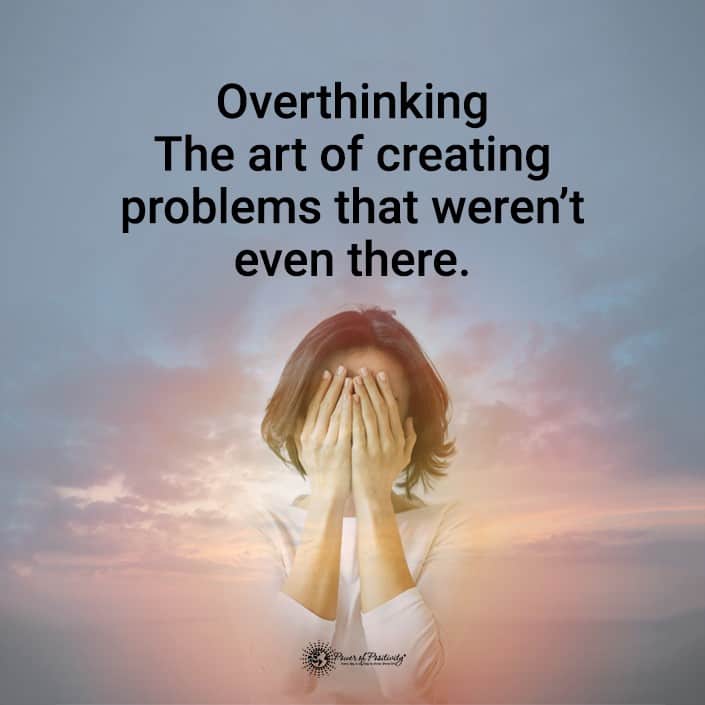Everyone has negative thoughts sometimes. There’s nothing inherently wrong with that. But problems begin to arise when those thoughts overwhelm you, tinging your entire world a darker, more pessimistic shade.
The good news is that you can turn negativity into positivity with a little hard work and practice.
4 Ways to Change Your Negative Thoughts Into Positivity
Here are four practical ways to convert negative thoughts to positive ones.
 1. Actively Seek Positive Things
1. Actively Seek Positive Things
If you’re not used to looking for good things in the world, it’s natural that you’d only see the bad. Unfortunately, bad things naturally stand out more to people than good ones, which is why actively seeking out positive things in your surroundings is essential. It takes time, but you’ll soon naturally see the good before the bad with stable outlooks like this.
Here are some tips and ways to begin this new cycle of thought-seeking:
· Ask Yourself Questions
When you find yourself spiraling into negative thoughts, pause and ask yourself a few things. For example, “What is a good thing I can see in this situation?” “How would a loved one help me in this circumstance?” or “What can I take away from this occasion?”. This shift distracts the negativity and breaks it up with positive thinking that is much more productive.
· Focus On Even The Smallest Good Things
Sometimes, positive things are smaller than the negative things in an environment, event, or situation. But that doesn’t mean that this small good thing isn’t worth caring about. Zoom in on that morsel of positivity and use it as a reminder that even the very darkest of clouds have their silver linings if you only concentrated on them and valued them enough!
· Make Lessons In Negativity
Lessons and learning are part and parcel of growth. Learning is an inherently good thing, even if the lesson is painful, complex, or not the one you hoped for. Unfortunately, when you’re stuck in negative thoughts, you don’t get to see the lessons at all. Instead, you’re trapped in unproductive patterns of self-hatred or self-blame. Ask yourself, what is a lesson you can take from this moment? How could you have and can you avoid a similar situation in the future? What can you do differently that will help? You’ll realize that the power to change and prevent repeats of this event lies with you!
· Use Humor
Humor is a common coping mechanism for stress, and according to studies, it works. Being able to make jokes helps your brain process difficult information while taking away the worst of the initial emotional sting. Sure, the problem is still there, but you’re coping with it positively and teaching your brain that laughter is the best medicine.
2. Learn To Handle Your Negative Emotions
This seems like a no-brainer when you’re trying to convert negative thoughts into positive ones. You need to learn to manage the bad emotions that well up within you if you want to direct your energies to better endeavors. But it’s not as easy as it sounds to do this! Feelings are powerful things, and it’s within human nature to respond and pay attention to them because they’re how our brains tell us something is wrong.
So, how can you handle these negative emotions so you can focus on converting them to better things? Here are some places to begin:
· Interrogate Your Thoughts
Alright, so negative thoughts and emotions are popping up in your brain. Dismissing or repressing them won’t help you in the long run, so go the other way – stare them right in the face and demand their explanations! This means you have to question your feelings and thoughts as if you were interrogating them. Ask them, are they grounded in reality? Are they serving you positively and productively? Where are they coming from? This method of addressing negativity is a healthy way to learn to understand your feelings and demonstrate that there are better ways to manage difficult situations than negative thought spirals.
· Learn To Manage Criticism
If you take criticism like a champ, then you don’t need to read this point further! The reality is that many people have difficulty accepting feedback, especially when it’s negative and even if it’s constructive. You may lash out at helpful critiques, but it’s also common to let it rot internally. This means you may motivate yourself to “prove them wrong” instead of listening to constructive criticism, or you may start berating yourself for not being “good enough” These are harmful ways to process critique! Draft a script that you can use when responding to criticism that shows you understand it and are thinking about it, then focus on the learning experience you gain from such feedback.
· Don’t Get Caught Up In Vague Things
Vagueness is a common state of negative thoughts and emotions. But that vagueness is terrible for you because it leaves honest thoughts undefined, looming as a Big Bad Guy you can’t quite face. They may be scary thoughts, but they belong to you. So define them. Name your exact problems, fears, and emotions, even when they sound or feel silly. Research has shown that defining feelings is often key to facing them in a positive way. When you do this, you can properly examine your thoughts and see that they aren’t as frightening as they originally appeared.
· Don’t Make Things Bigger Than They Are
Yes, it’s true that sometimes, situations are flawed. But that doesn’t mean they’re the absolute end of the world. Making mountains out of molehills, or catastrophizing, is a process that doesn’t serve you productively and creates negative situations and thoughts that aren’t even grounded in real life. Is the thing you’re feeling bad about really that bad? Will it matter in a week? How about in a month? What about in a year? Most of the time, your brain will be creating bigger problems than exist. Get out of this mindset, and positive thinking will follow.
 3. Express Negative Emotions
3. Express Negative Emotions
To convert negative thoughts to positive ones, you must first learn to express that negativity. “Converting” thoughts doesn’t mean transforming bad things into good things all the time. While that is possible with some emotions, others dig deeper down, and those issues can be harder to “change.” Expressing those negative feelings can help make space for positive thinking. Here are some ways to express your worst thoughts:
· Write In A Journal Or Thought Diary
Journaling is a tried and true method for managing negativity, according to research. It allows you to freely express all your worst, most toxic thoughts and emotions in a space where no one can judge you for it. You can write anything and everything, and it’s all easily recorded for you to come back to for reflection later. You’ll express all your bad feelings and thoughts, allowing you to process them as you write while reducing their intensity.
· Talk To Someone
Telling other people about your negative emotions can help express them. You can speak to a friend, mentor, family member, loved one, therapist, or another person you trust. The act of venting or ranting like this can help you work things out verbally, and if you ask for it, it may even grant you the perspectives of the people you’re talking to.
· Do A Quick Workout
Exercise puts a strain on your body, forcing you to expend stressed or negative energy as you do. It also releases feel-good hormones called endorphins that make you naturally feel better. In addition to all of that, uniform, repetitive exercise – like running – has been found in studies to produce a meditative effect. The repeated motions can help the brain enter a calm state, during which the negativity is abated. Just twenty minutes of heart-pumping physical activity can help you!
4. Create Opportunities For Positivity
Positive things don’t always exist easily. You may be unable to see good things in especially low moments. Following this logic, without the chance to be positive, you may not be able to find any positivity at all. That’s why you must create opportunities for such good thoughts by manifesting them into your life. Here are four ways you can do so:
· Start Days With Positive Affirmations
Positive affirmations refer to any positive “mantras” or phrases that you repeat to yourself. These phrases are empowering, present-tense statements designed to manifest your desires into reality. For example, you might say, “I am confident and capable” or “Happiness lives within me.” The idea behind them is that repeating phrases to yourself enough will make them a reality, as your brain will internalize the repetitive message. Studies have found that positive affirmations are effective, so starting each morning with them is a great way to set a positive tone for the rest of the day.
· Surround Yourself With Positive People
Negative people tend to bring everyone around them down with them. When you spend time with people like this, you will begin developing their methods of thinking and looking at the world. That’s why it’s so important that you fill your social circle with positive individuals. These people will lift you, support you, and make you feel good about yourself as you learn to see the world as they do!
· Practice Gratitude
There are many everyday things that people naturally take for granted. Access to necessities, loved ones, transportation, a job… all these are things you can be grateful for. Regularly expressing thanks towards your life and the people around you is a fantastic way to develop a more positive outlook on the world and life. Try to name three things that you are grateful for every day, no matter how mundane they seem. You’ll soon realize that there’s always a sliver of light, even in dark times.
· Bring Positivity To Others
Sometimes, it can be hard to find any positivity in your own life. Creating positivity for others can remind you that there are good, happy things in the world. Offer to do a favor for someone, perform random acts of kindness, and give out smiles, greetings, and compliments freely. Your positive thinking can be further fueled by how much good impact you can have on the world around you. This encourages you to always look for positive opportunities, even in bad times.
Final Thoughts on Turning Negative Thoughts into Positive Ones
Negative thoughts have a purpose, but they shouldn’t be allowed to linger. Once you’re informed of their concerns, you can slowly begin focusing on better, positive things. Those bad thoughts will soon be transformed into good ones that help you learn, improve, and move on with your life.


















